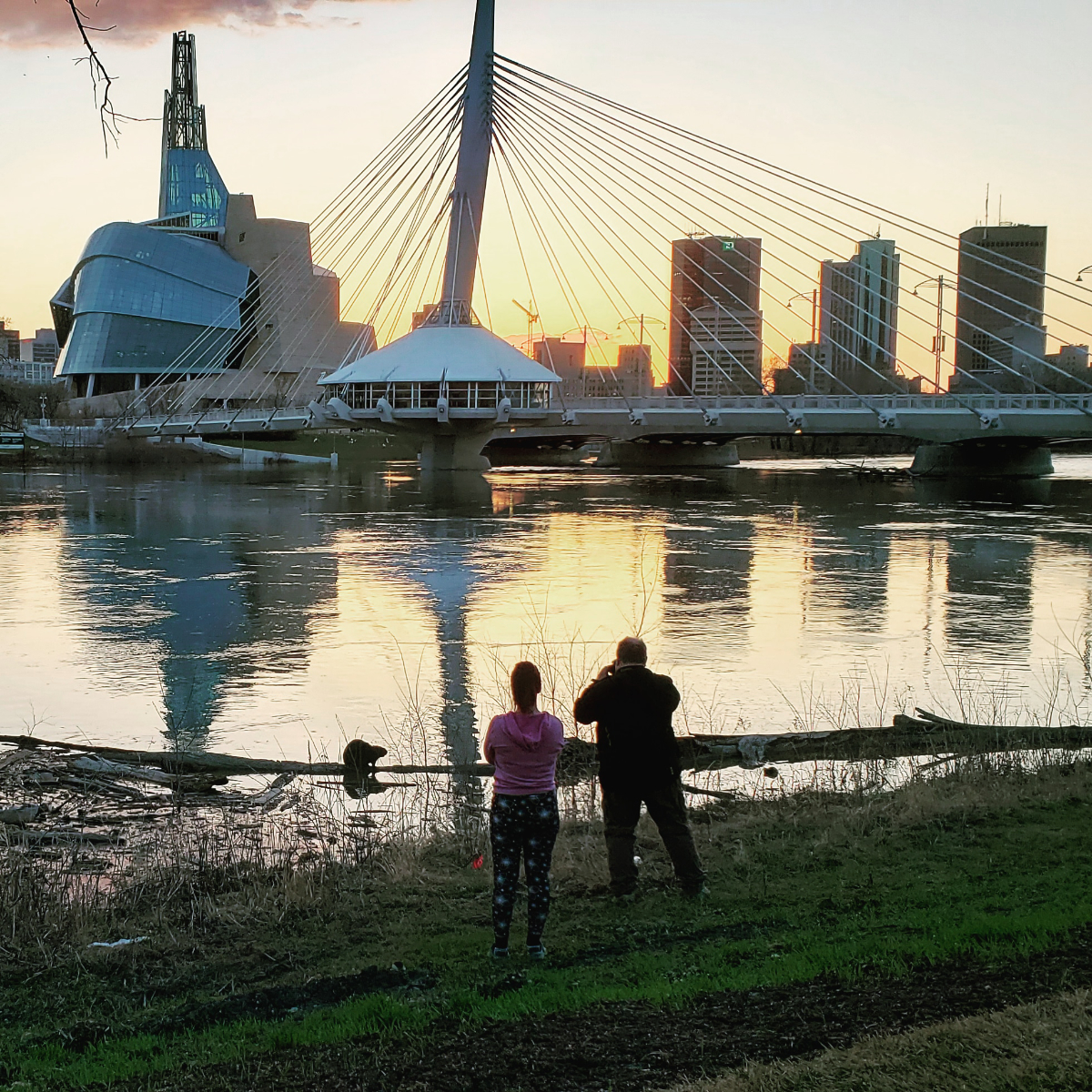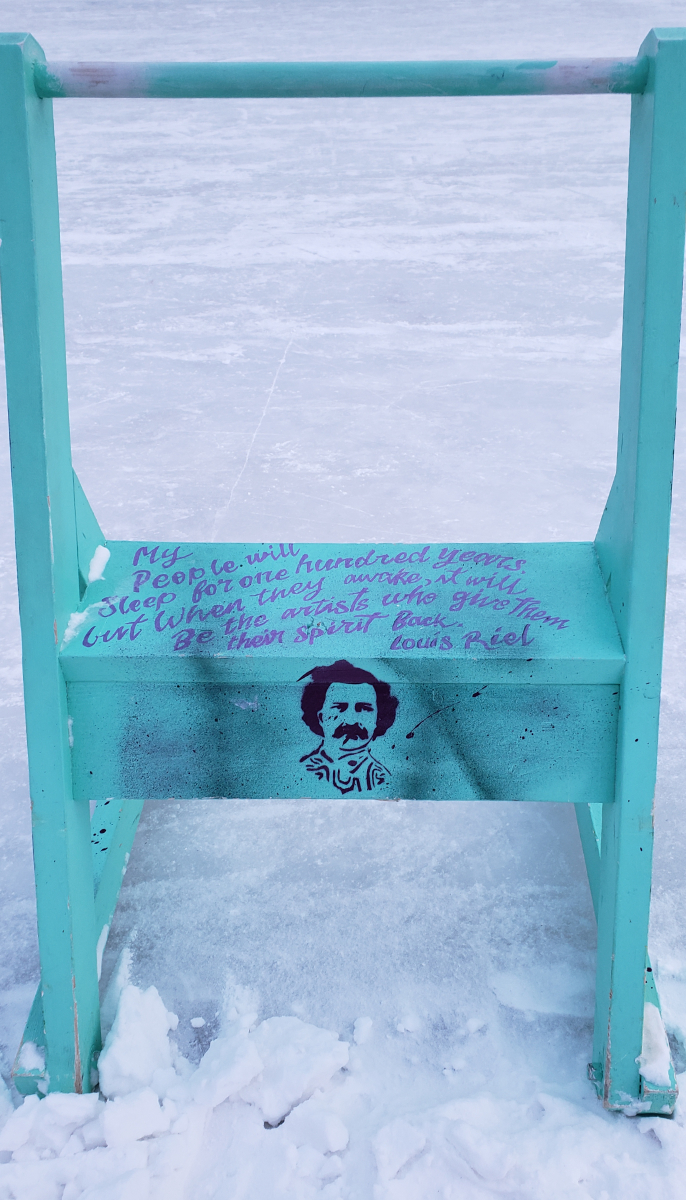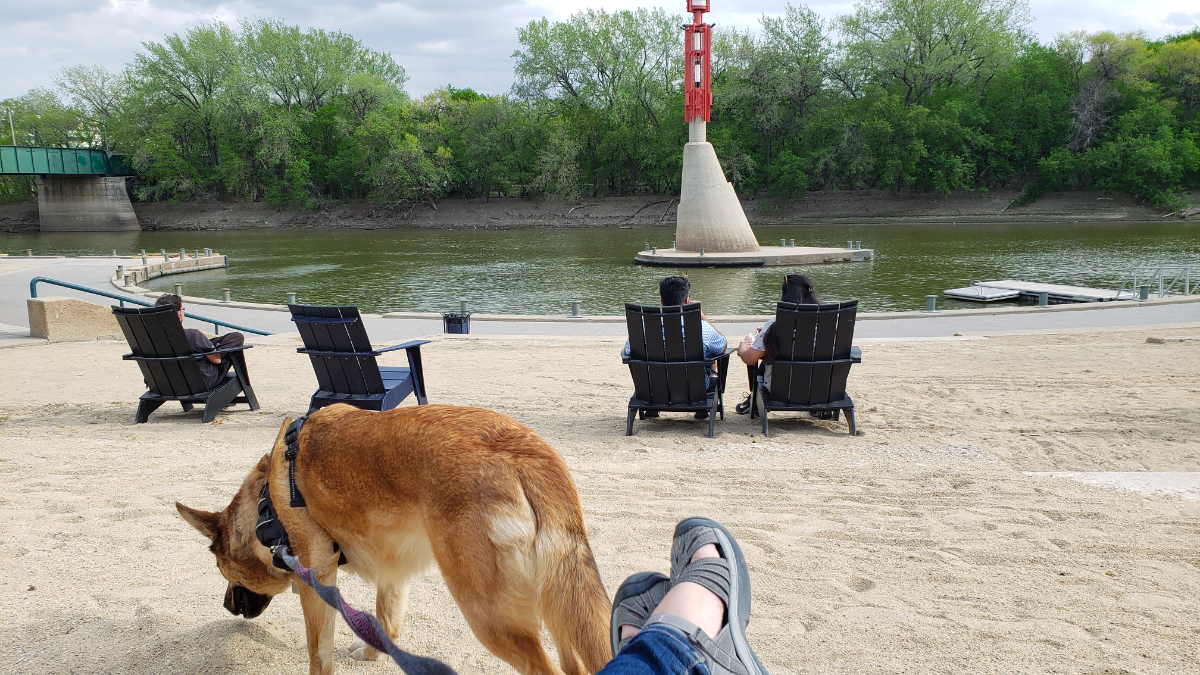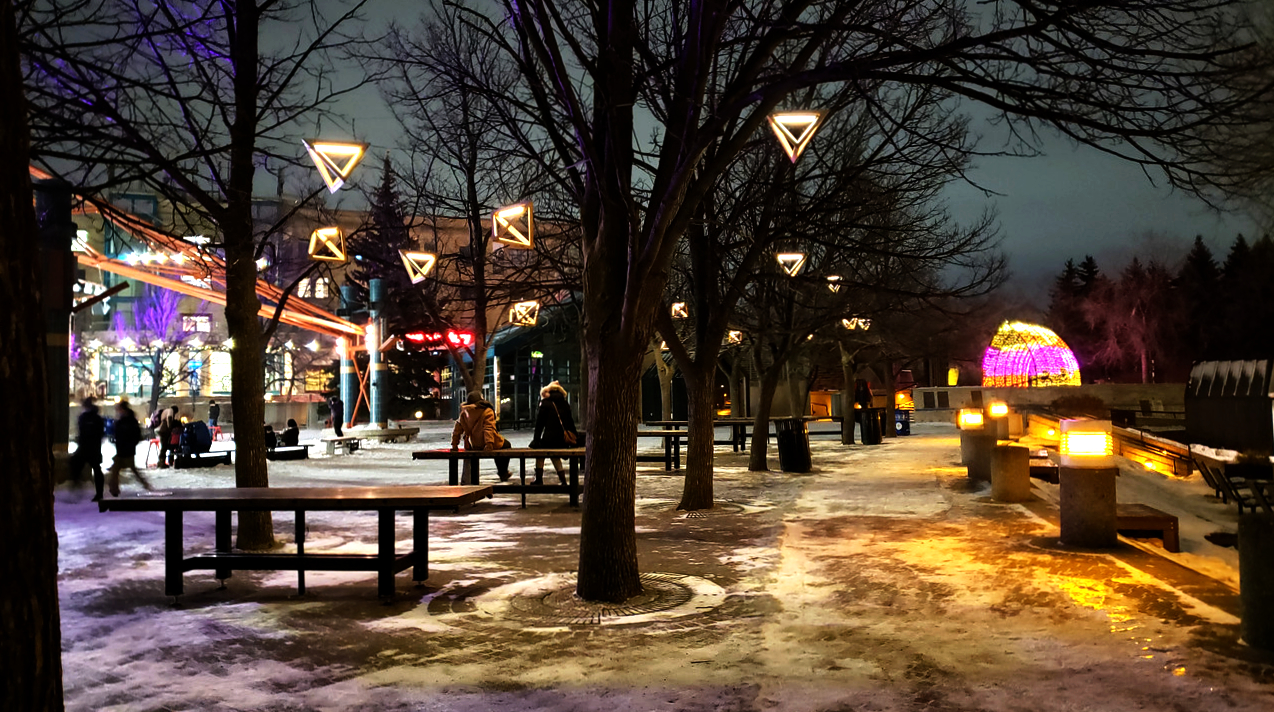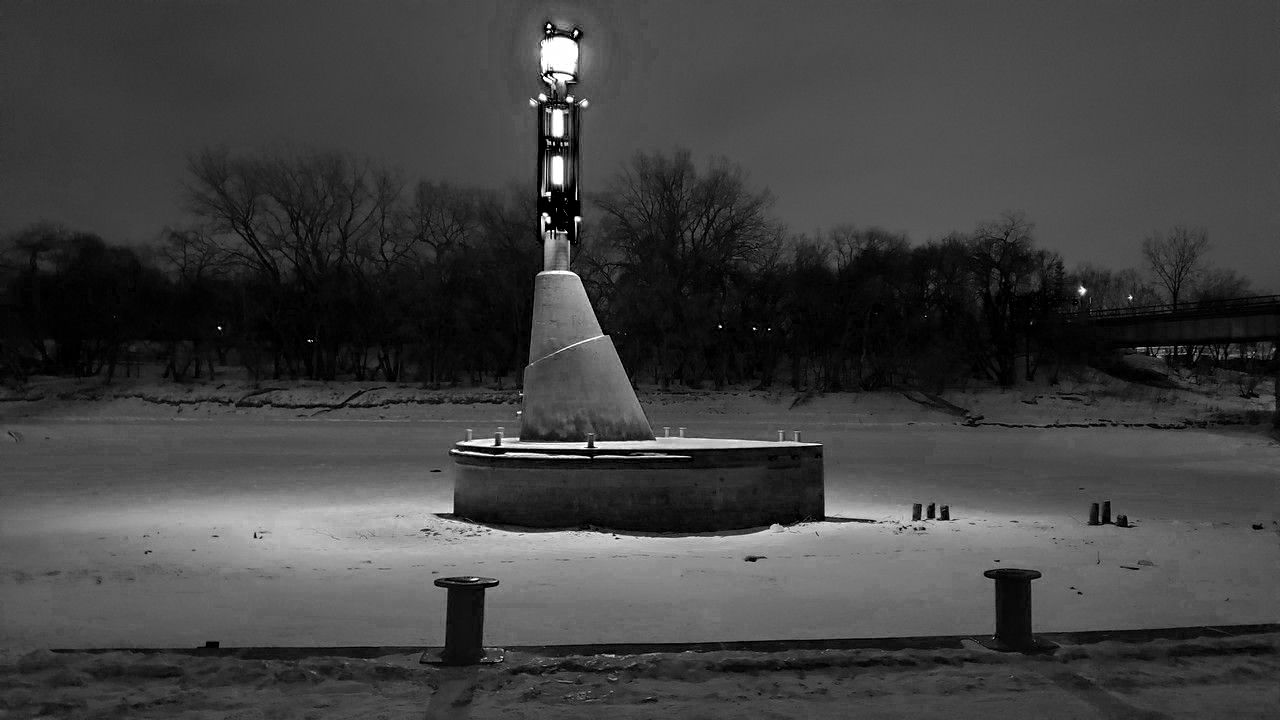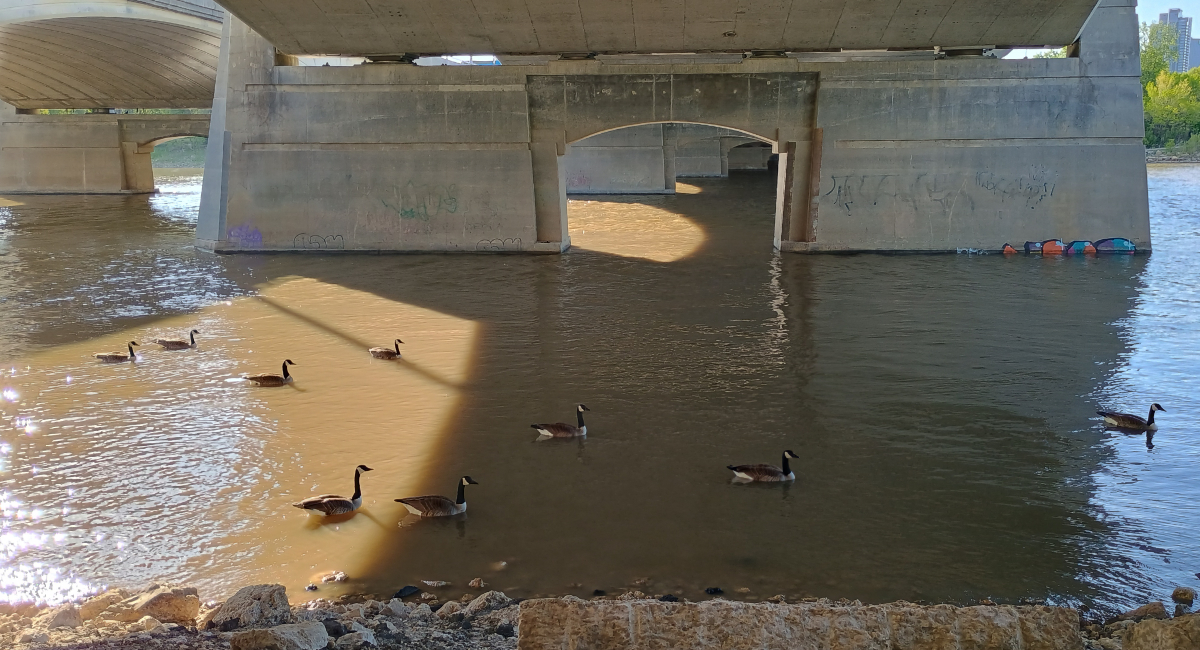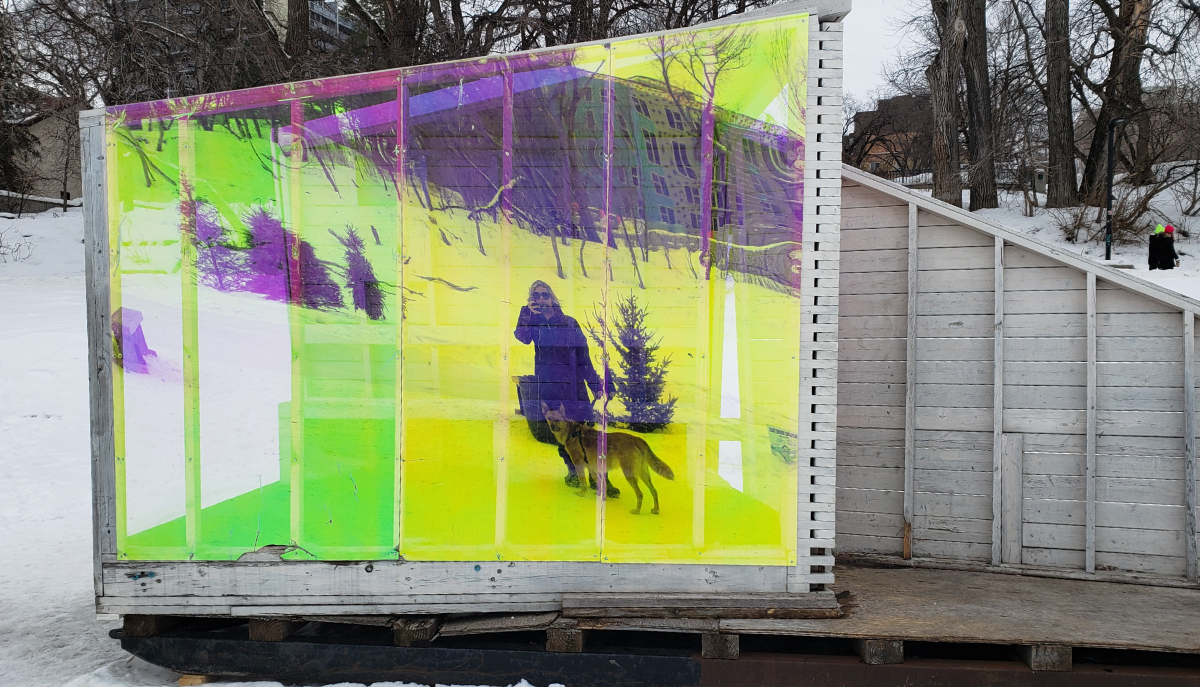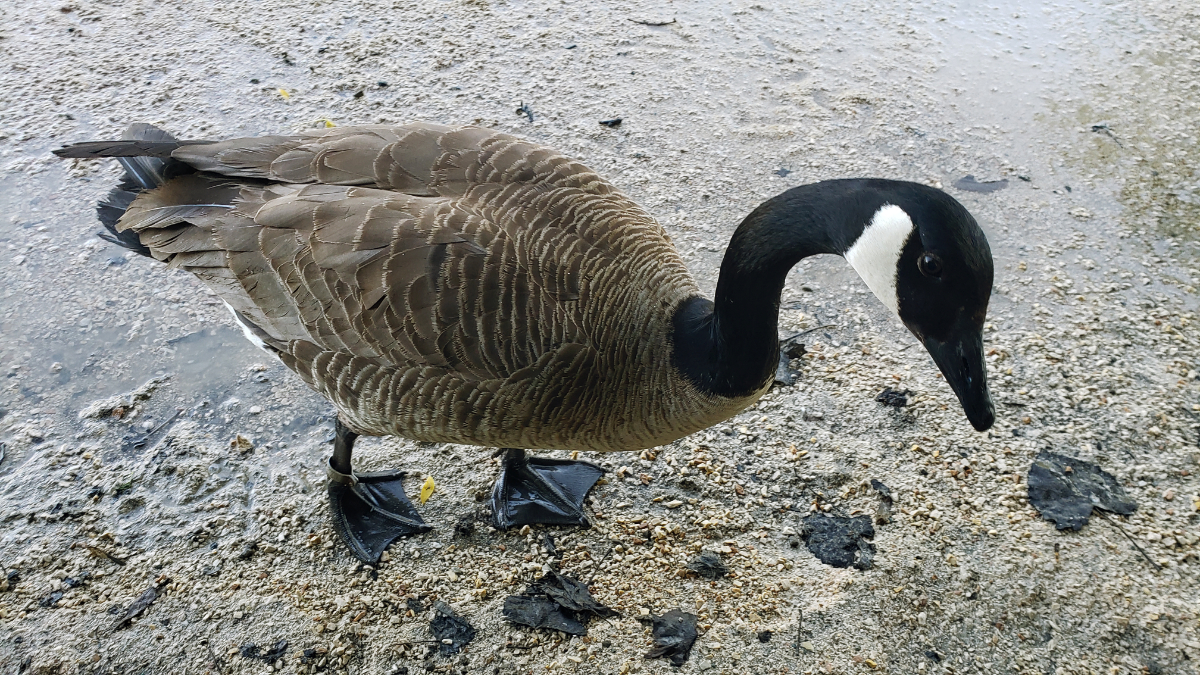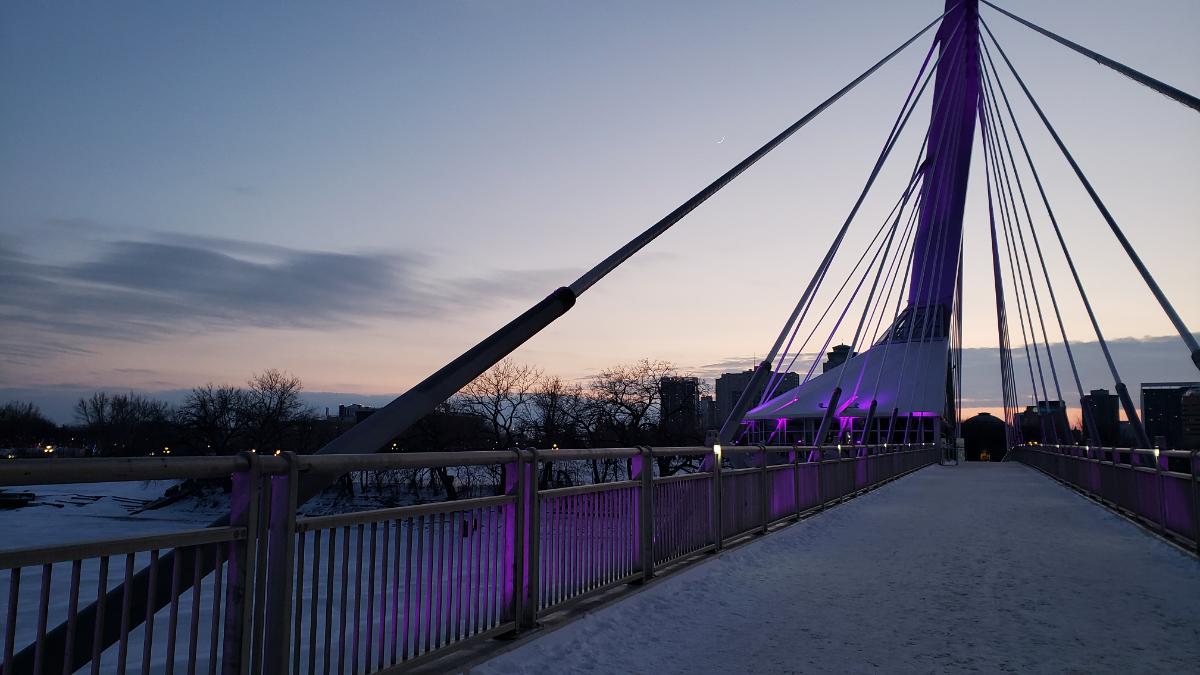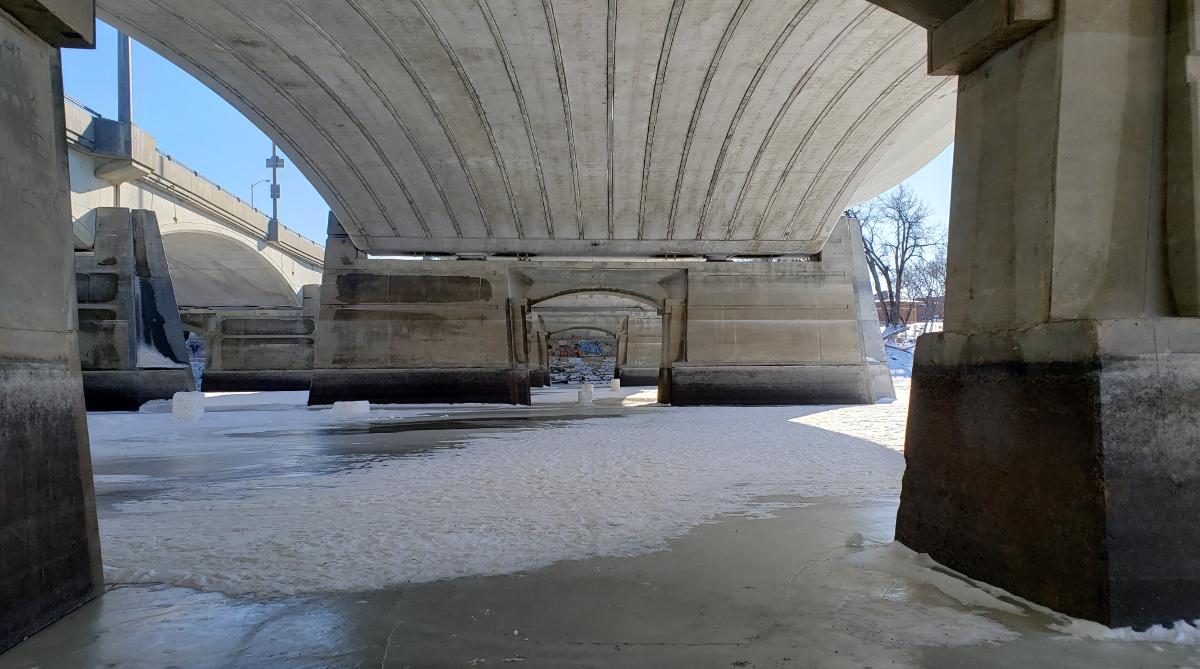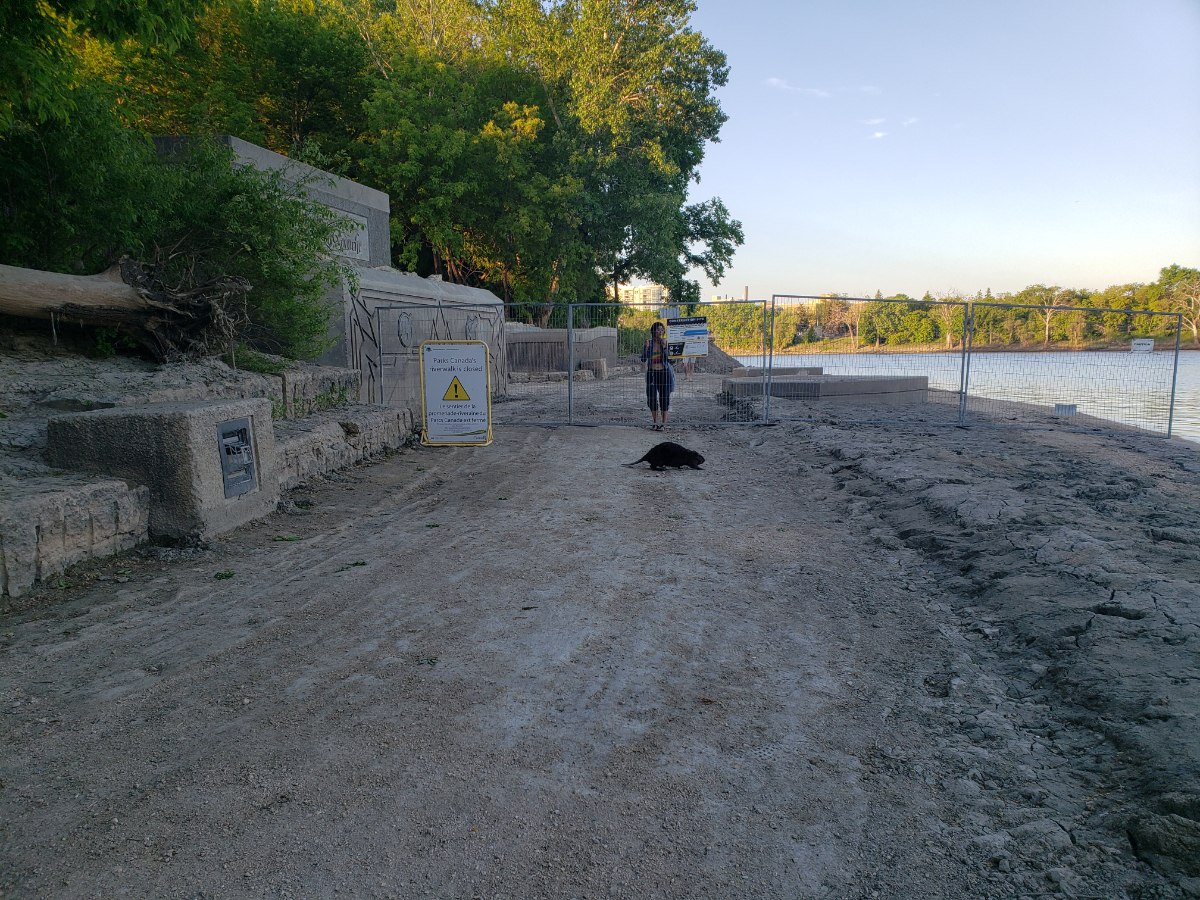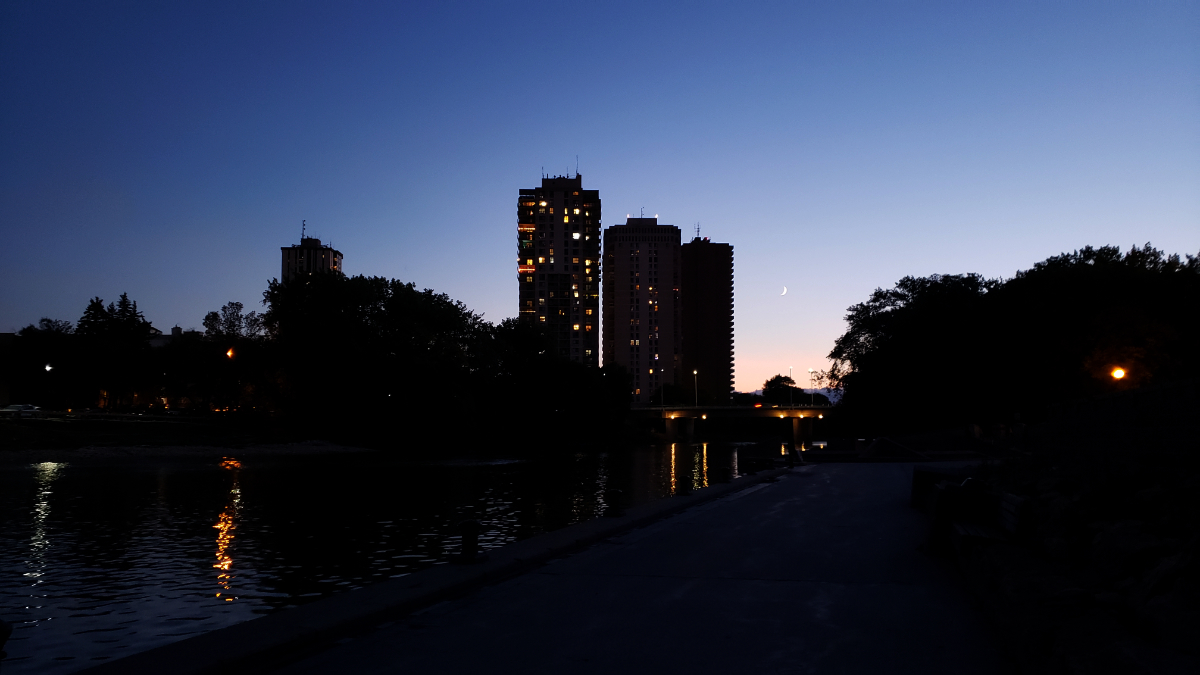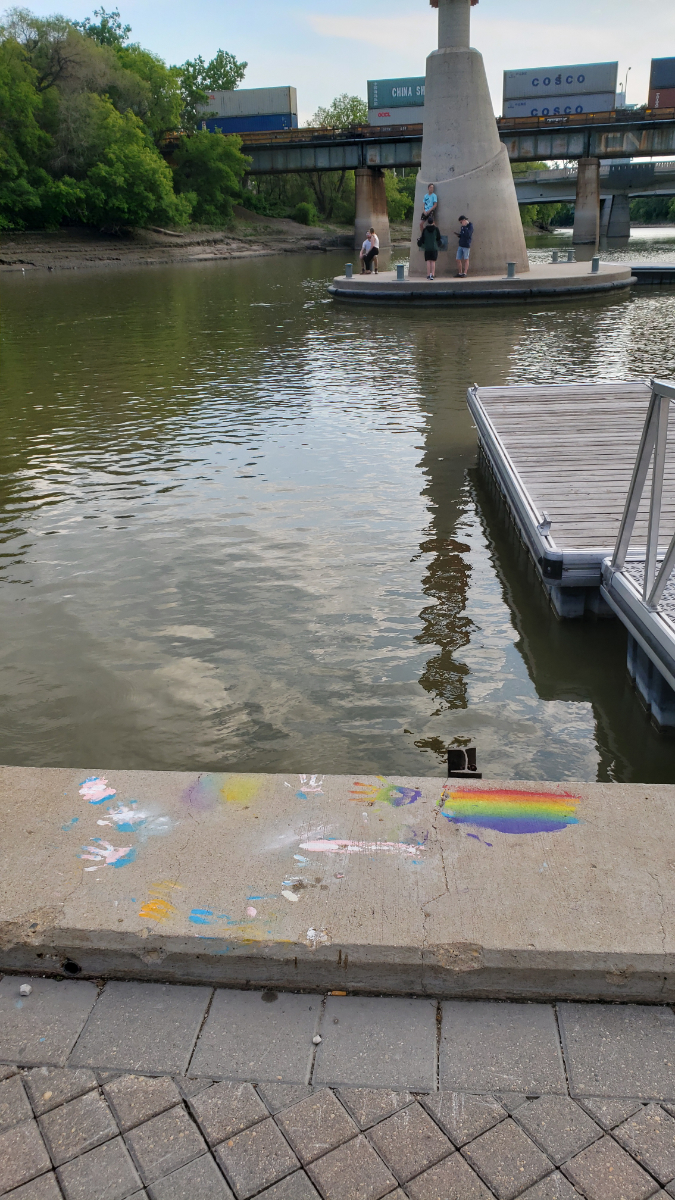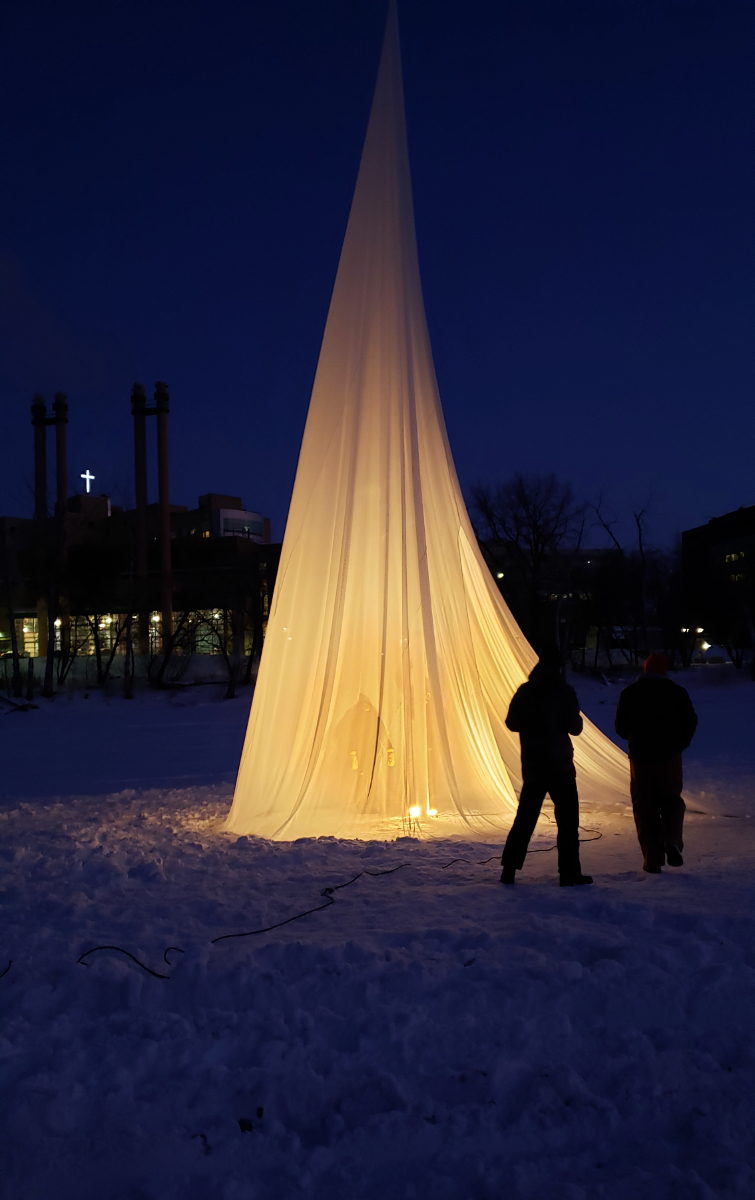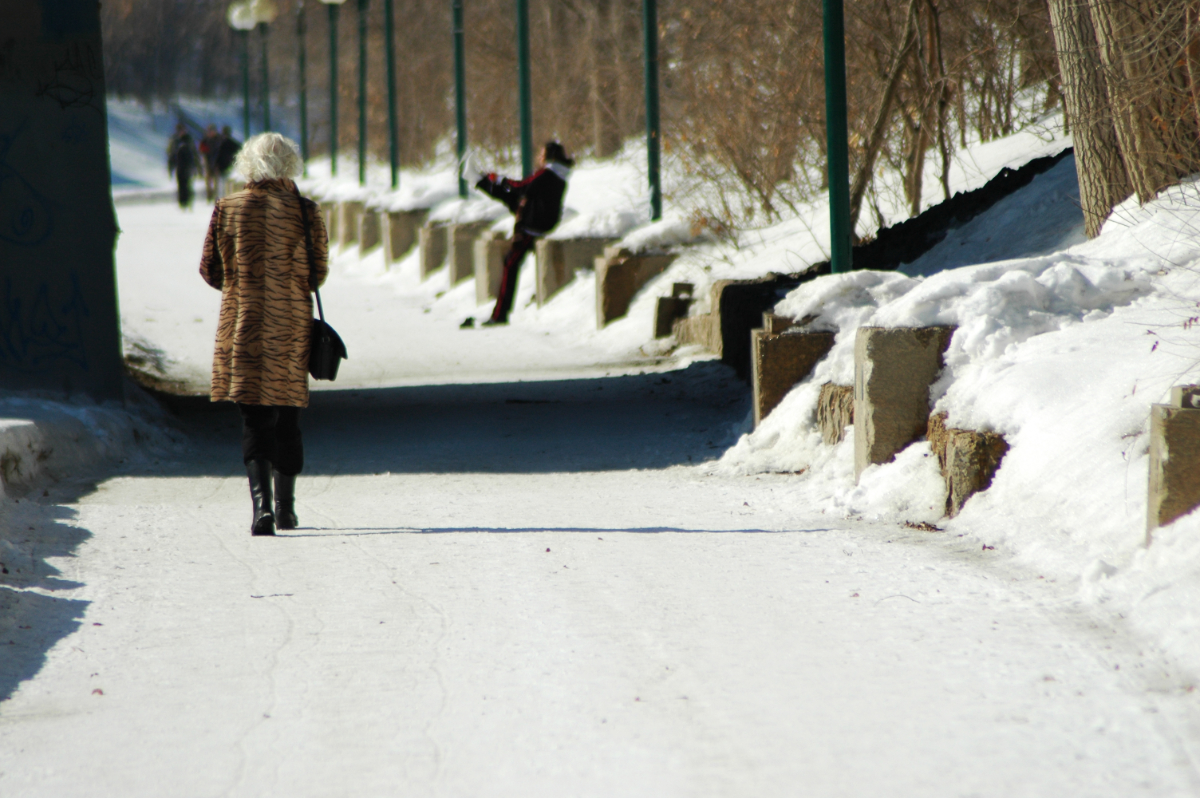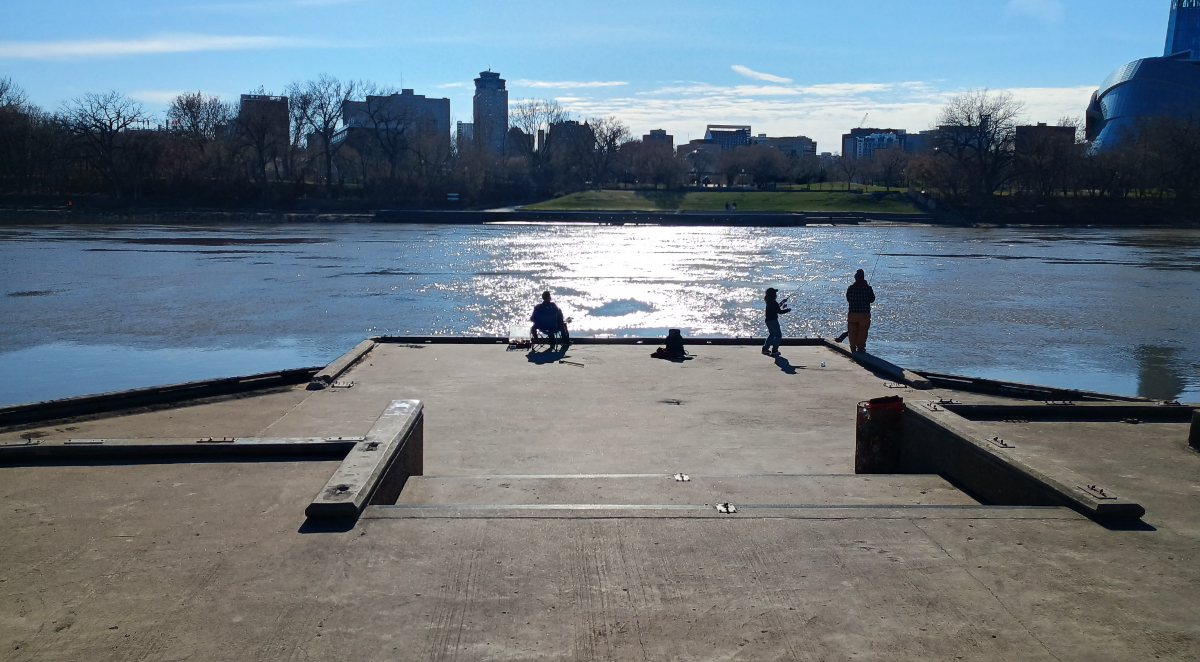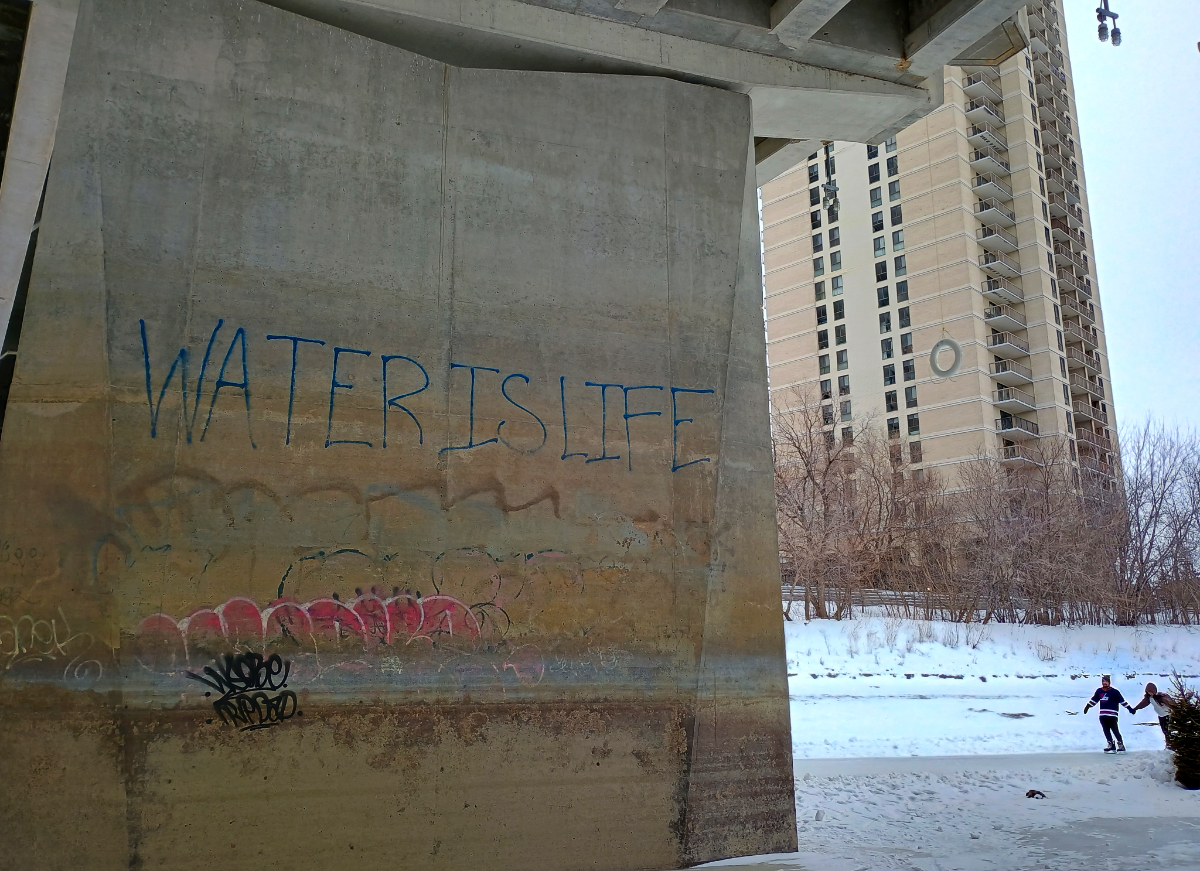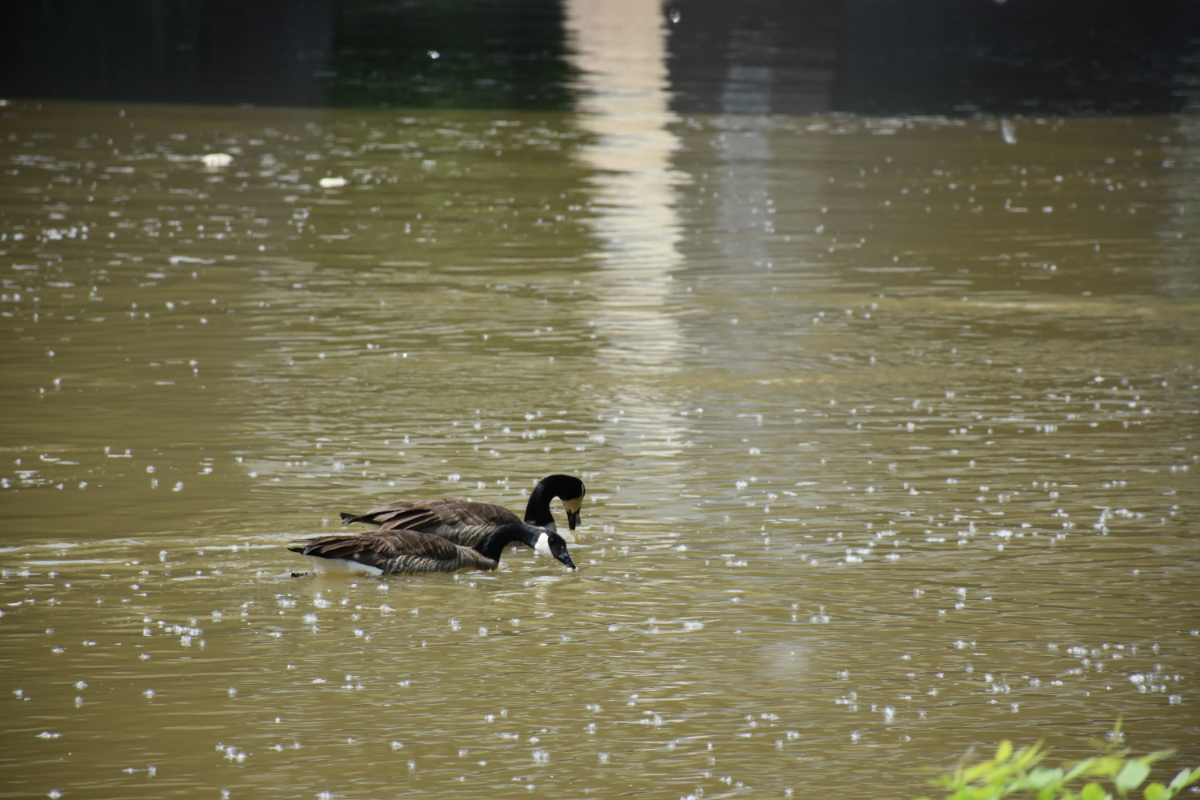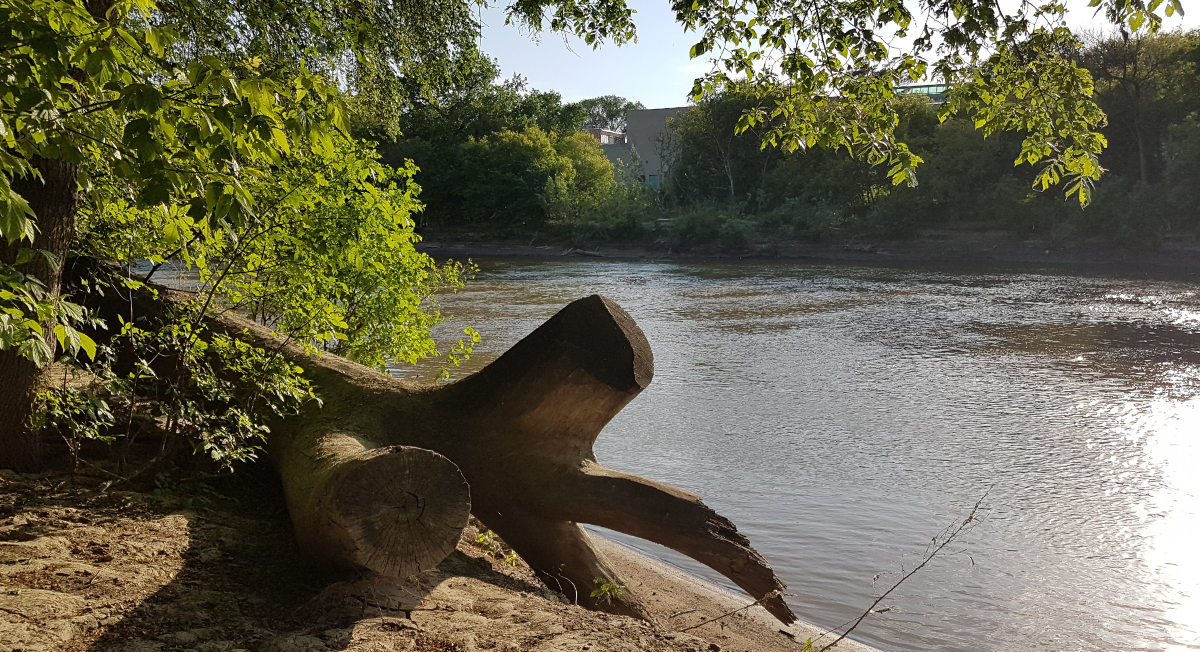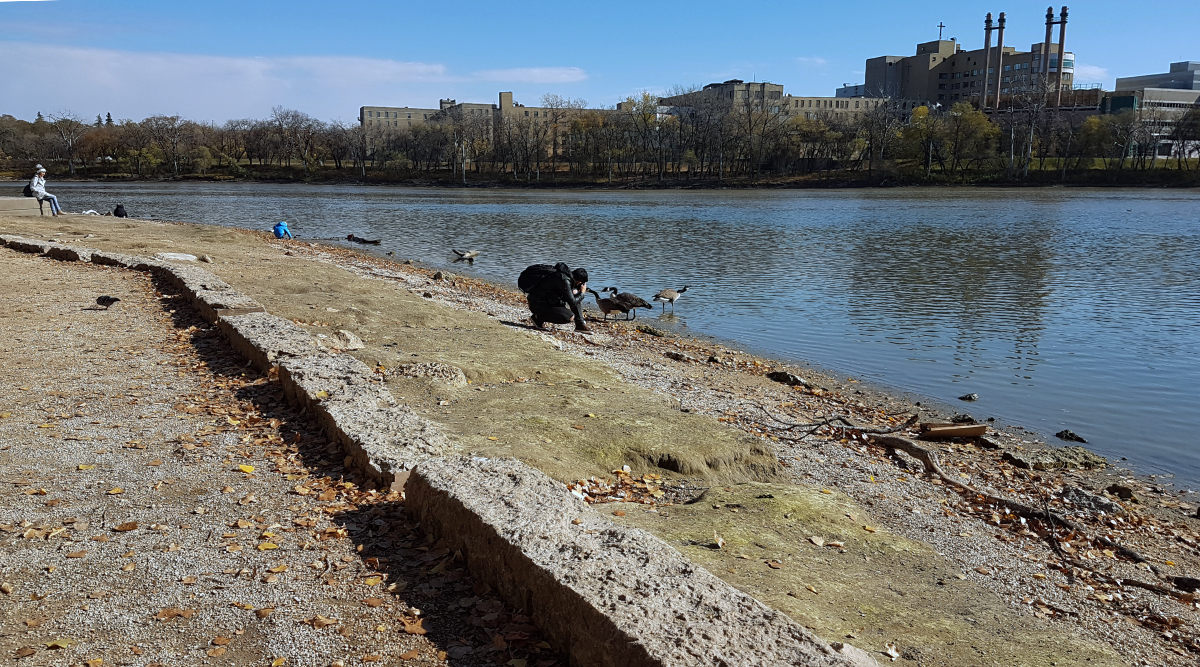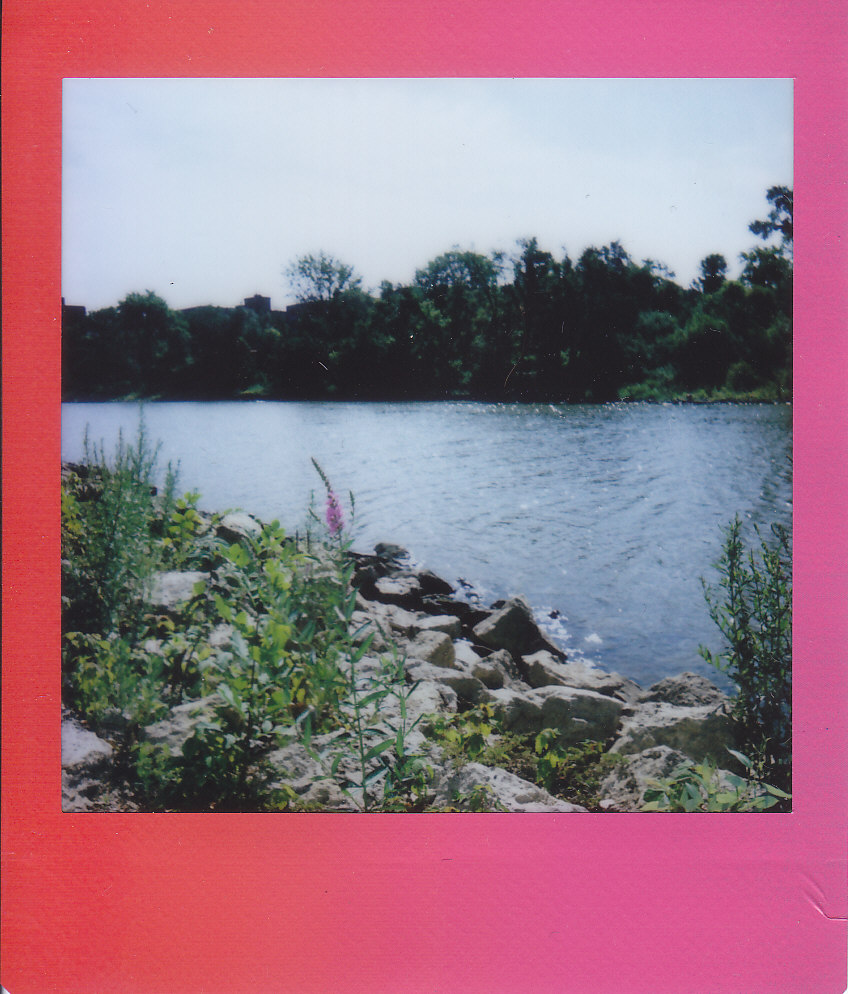
"Winnipeg" translates literally to dirty water. Muddy water, if you want to feel cooler, though I prefer something more ominous and unsettling: murky waters. The existing meaning of the term fits the state of the world as a whole, as we progress through the 21st century with its social and ecological challenges. The size of Winnipeg — moderately populated, with roughly 800,000 people, but still the biggest Canadian city across a vast longtitude between Toronto and Calgary — adds a demographic context to the geographical location, which is in the very middle of the North American continent. The prairie ecosystem surrounding the city of rivers, lakes, and fertile farmland made it a logical location to establish an urban centre, around the convergence of the Red River (of the North) and Assiniboine River. This was done with colonialist intentions that displaced and destroyed much of the Indigenous trading activity, and we are paying the costs; however, cultural and demographic shifts give us the opportunity to tap into a massive potential for social change.
The winters are known to get brutally cold and dry and the summers are known to get humidly hot and muggy, but there is some protection, by virtue of being about as far from an ocean as you can get in this world, from drastic threats of climate change that impacts coastal or tropical regions more severely. There is also resilience that comes from living with these opposing seasonal shifts and widely varying flooding seasons from year to year. Urban environments are boxed in with the notion of artificial surroundings and disconnect from nature, but cities are quite often founded upon and framed around some natural feature, and rivers are a very common choice. The photographs shared on this page are an expanding collection of my personal picks of pics I've taken on or near the Red and/or the Ass Rivers, of natural features or artifacts of the anthropocene.
(and yes, we, by which I mean I, call it "Ass River")
Come back regularly (or don't, I'm not very good anyway).
























